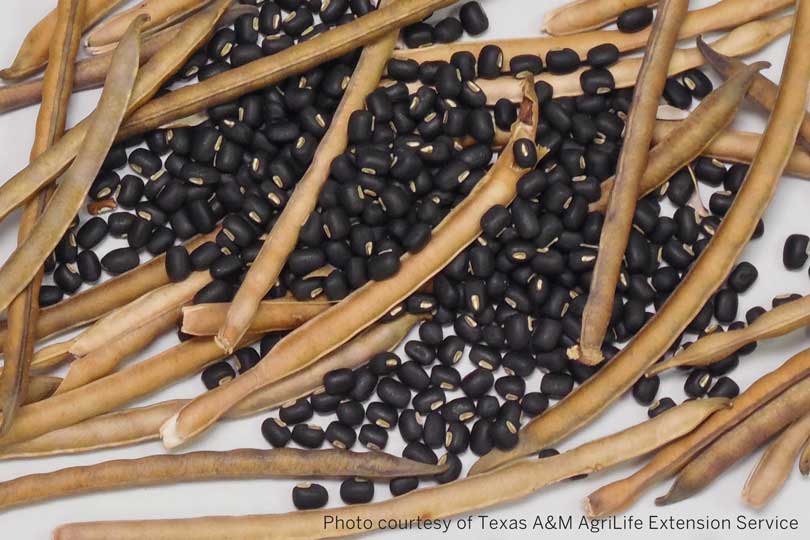By Justin Walker
Communications Specialist
Texas A&M AgriLife researchers have developed a new variety of cowpea that can assist farmers and ranchers in a variety of ways.
The new forage cowpea, Ace, was formulated with several desired characteristics in mind and serves as a thorough option for livestock, wildlife and improved soil health, according to Dr. Gerald Smith, AgriLife Research plant breeder.
The variety is a small-seed cowpea cultivar that can be used for forage and hay production, as a cover crop or as a wildlife supplemental planting. While some varieties of the warm-season, drought-tolerant legume can be used for human consumption, this particular variety was developed for livestock, wildlife and soil health in mind.
“It wasn’t bred to be an edible variety for humans, but it’s a great forage and browse cowpea, has good vegetation that grows throughout the season and can be utilized for hay or as a cover crop,” Smith said in an interview with AgriLife Today. “It can also be produced for seed here in Texas, which brings a value-added component to its potential.”
Smith said Ace has a small seed size, high biomass yields and a prolonged growing season. It’s comparable to Iron and Clay, an older variety mix used in Texas and the southern United States as white-tailed deer supplemental planting. The difference, Smith said, is Iron and Clay is a late flowering variety, restricted in North Texas because of winter kill prior to seed maturation.
While Ace is appropriate for deer browse, Smith said researchers are looking into its effectiveness as quail and turkey supplement.
“It’s useful in mixtures with other wildlife plants such as millet, sunflowers and sorghum,” he said. “Its seed size means producers get more seed per pound, and that lends well to lower seeding rates, which reduces costs.”
Smith said researchers have also studied the germination rates for the new variety. Results from two years of studies show about 50 percent of an Ace seed crop will germinate within the first month following seed maturity. Smith said the other half will typically germinate slowly over the next 60 to 70 days, as long as conditions are suitable.
The potential for annual reseeding could be a valuable tool in stand management, Smith said.
“That’s the selling point for this variety,” he said. “If allowed to reseed, we think at least half the seed crop of Ace would germinate. That in turn will mean cost savings for producers.”
Click here for more information on the Ace cowpea variety.

